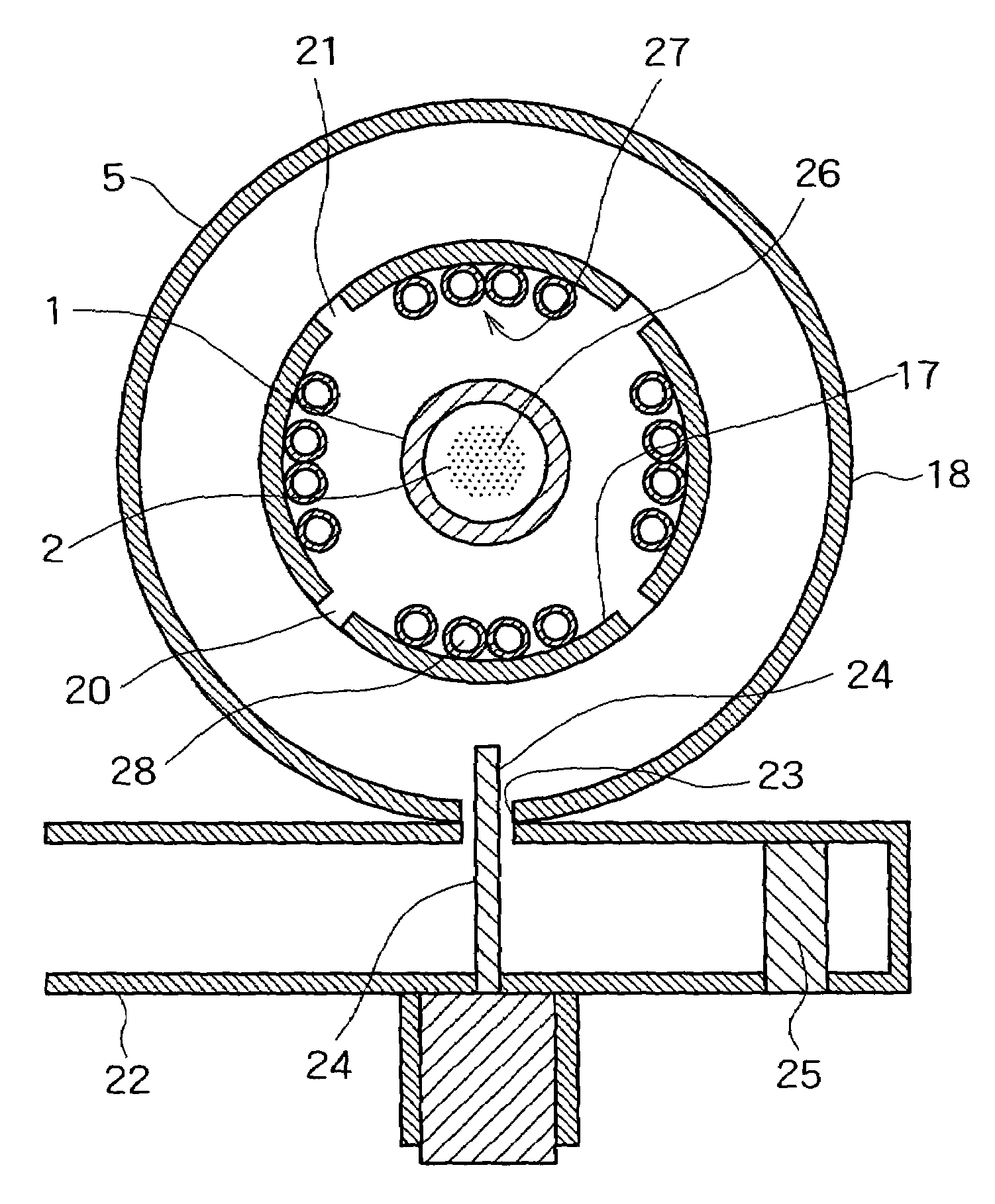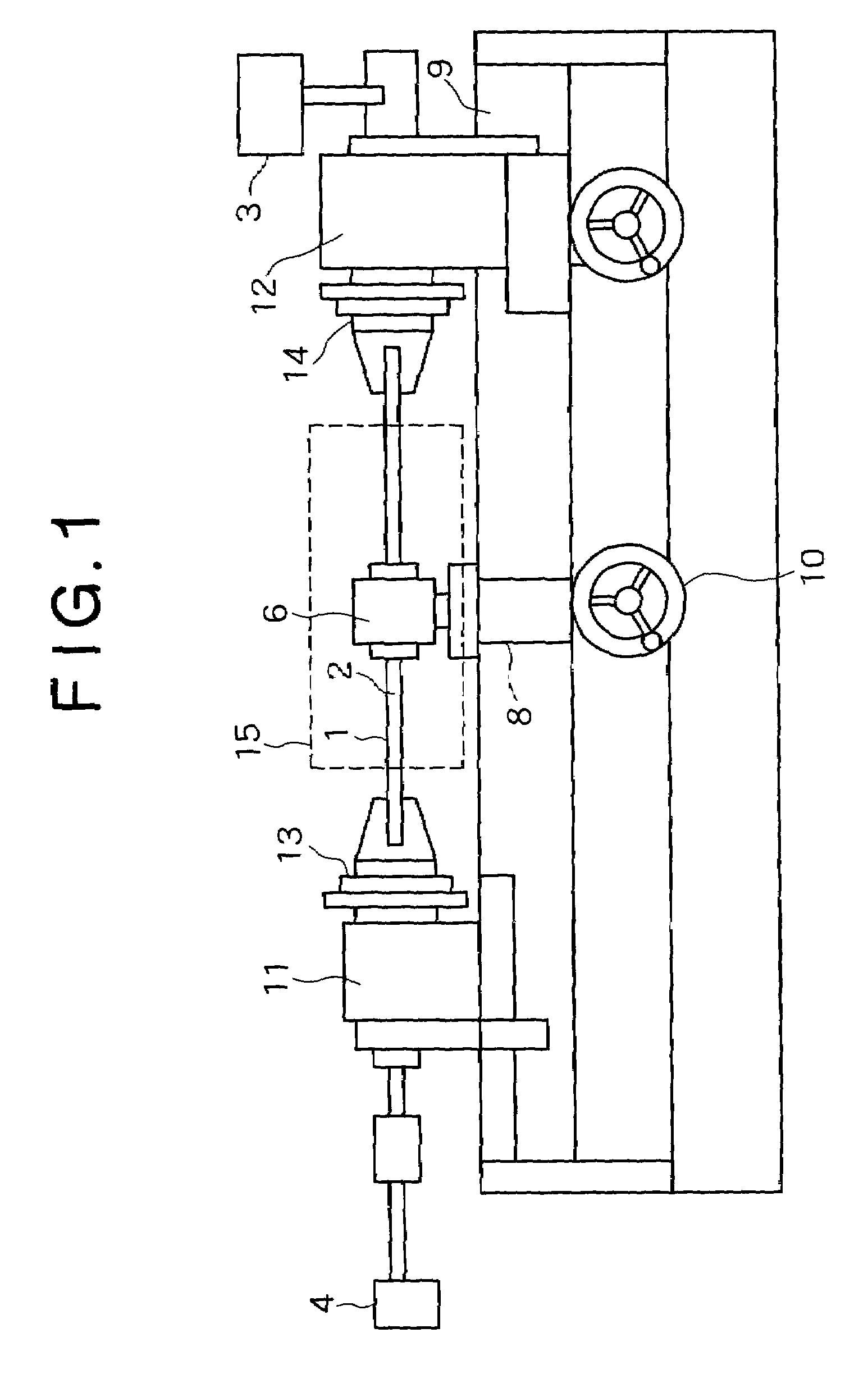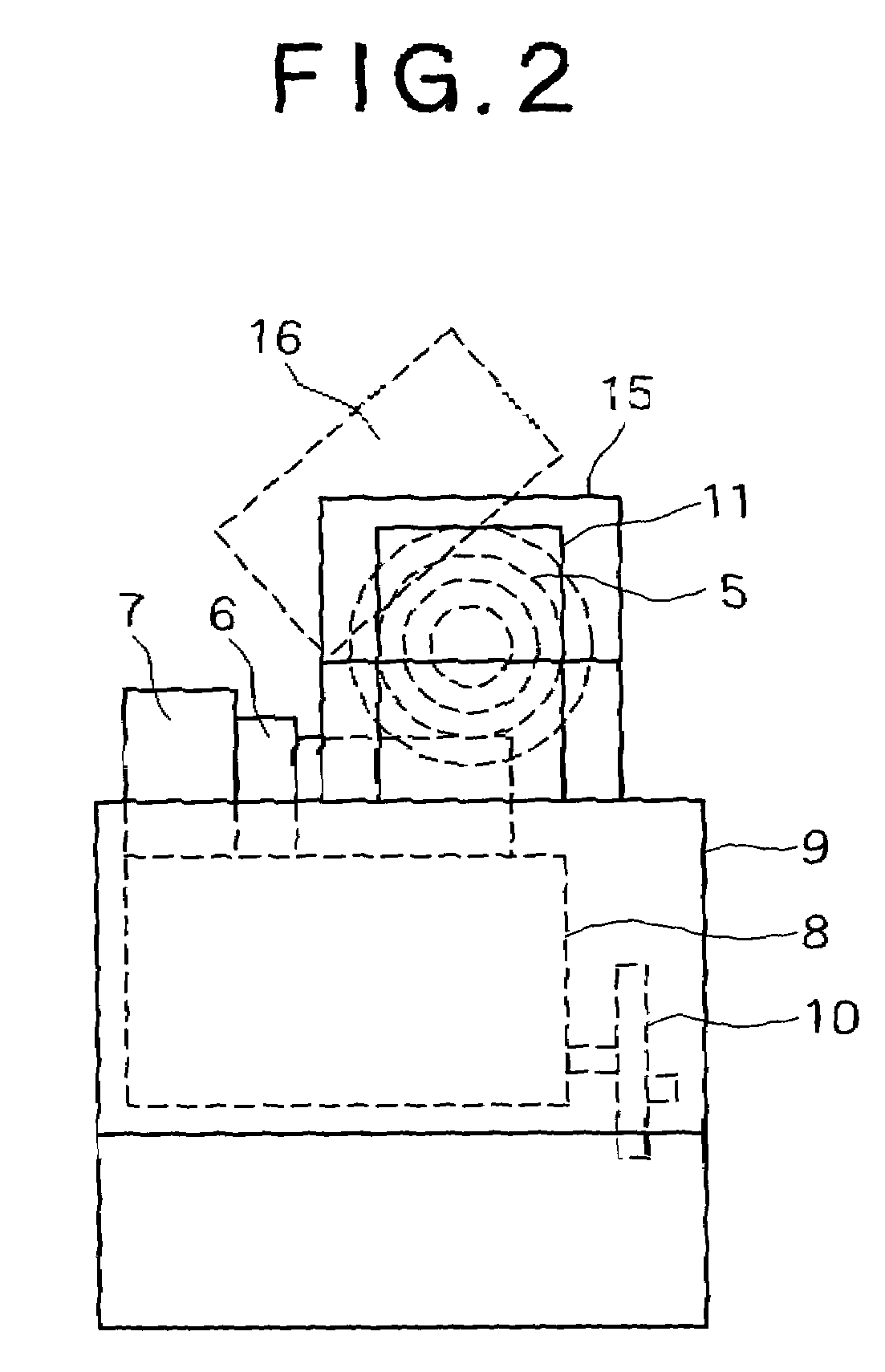Plasma CVD apparatus
a cvd and plasma technology, applied in glass making apparatus, manufacturing tools, electric/magnetic/electromagnetic heating, etc., can solve the problems of increasing the increase of the propagation loss of the microwave, and the increase of the loss of the waveguide, so as to prevent the overheating of the annular waveguide and the lowering of the radiation efficiency of the microwave
- Summary
- Abstract
- Description
- Claims
- Application Information
AI Technical Summary
Benefits of technology
Problems solved by technology
Method used
Image
Examples
Embodiment Construction
[0061]Embodiments of the present invention will be described hereinunder with reference to the accompanying drawings.
[0062]A plasma-activated CVD system shown in FIGS. 1 and 2 is for producing an optical fiber, in which a silica-based material for example is deposited on an inner surface of a quartz tube 1 to form a film.
[0063]The plasma-activated CVD system is provided with a pressure reducing means 3 for reducing the pressure of a hollow portion 2 of the quartz tube 1, a gas supply means 4 for the supply of gas to the hollow portion 2, and an annular waveguide 5 which radiates a microwave from an outer periphery side of the quartz tube 1 to generate plasma of the gas present within the hollow portion 2, thereby forming a film on an inner surface of the hollow portion 2.
[0064]In this embodiment, the hollow portion 2 of the quartz tube 1 is used as a reaction chamber and the quartz tube 1 itself is used as a substrate tube, with a film being formed on an inner surface of the substra...
PUM
| Property | Measurement | Unit |
|---|---|---|
| Angle | aaaaa | aaaaa |
| Angle | aaaaa | aaaaa |
| Melting point | aaaaa | aaaaa |
Abstract
Description
Claims
Application Information
 Login to View More
Login to View More - R&D
- Intellectual Property
- Life Sciences
- Materials
- Tech Scout
- Unparalleled Data Quality
- Higher Quality Content
- 60% Fewer Hallucinations
Browse by: Latest US Patents, China's latest patents, Technical Efficacy Thesaurus, Application Domain, Technology Topic, Popular Technical Reports.
© 2025 PatSnap. All rights reserved.Legal|Privacy policy|Modern Slavery Act Transparency Statement|Sitemap|About US| Contact US: help@patsnap.com



